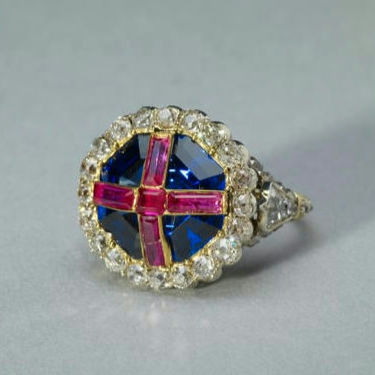Queen Victoria’s Coronation Ring
- Victoria Regina
- Jun 15
- 2 min read
Designed and made by the royal jewellers, Rundell Bridge & Rundell, in 1838, Queen Victoria’s coronation ring was inspired by that of her uncle, King William IV, from seven years earlier. The tradition of the coronation ring plays an important role in the monarchs investiture, during which, after the anointing of holy oil, the Archbishop will place the ring on the monarchs fourth finger as a symbol of ‘kingly dignity’. This is then followed by the crowning.

Unfortunately for nineteen-year-old Victoria, Rundell Bridge & Rundell, had misinterpreted the ‘fourth finger’ as being the little finger rather than the ring finger. Despite the ring clearly being too small, the Archbishop of Canterbury insisted on forcing it onto the correct finger, causing the Queen excruciating pain. In her journal, Victoria described how she later “had the greatest difficulty in taking it off again,” but thankfully with the help of ice, she succeeded in doing so – “but not without great pain.” Victorias coronation ring contains an octagonal step-cut sapphire, which is open-set in gold, with four oblong and one square ruby over the top in the formation of a cross. This stunning composition is surrounded with twenty cushion-shaped brilliants. More brilliants can also be seen on the shank and band.

For centuries it had been tradition for each monarch to have their own unique ring made for the occasion and added to their own personal jewellery collection. However, this tradition was changed in the twentieth century. Upon her death, Queen Victoria decided to leave her coronation ring to the Crown, along with the rings of William IV and his wife, Queen Adelaide. In March 1919 Victorias grandson, King George V decided that the jewels should be displayed in the Tower of London, where they can still be seen today.



Comments